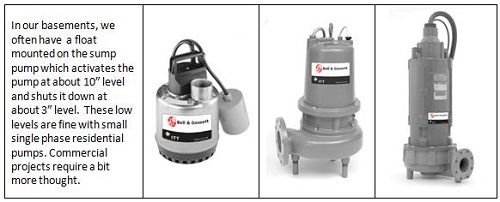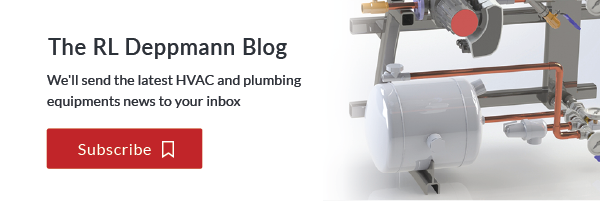| We now begin a Monday Morning discussion about pumps, controls, and sumps. This article addresses a basic, but important question, which comes up often when setting the level controls in a sump, “How low should the pump-off float switch be set?”
The safest way to know the minimum water level is to read the installation, operation, and maintenance manual (IOM). The IOM also provides important safety considerations to keep the installer and operator safe from harm. When the engineer is designing the project he or she may not know what brand they will end up with, after bids. The minimum water level is required to assist in the sump sizing. Many of the ITT Bell and Gossett sump and sewage pumps can operate with the low level about 6” below the top of the pump motor. Explosion proof pumps must have the motor fully submerged. In fact, any time the pump may be called to operate continuously; it is recommended that the motor be completely submerged. Based on these comments, we assembled the following selection guidelines. Once the pump model is selected, it is best to call us and ask what the factory recommends for minimum submergence. Contractors should ALWAYS check the IOM and follow the manufacturer’s recommendations. Rule of thumb table for minimum level in sumps (Not explosion proof). Always check exact manufacturer requirements before setting the minimum level. |
 |
Thank you for using products sold by R. L. Deppmann Company in Michigan and Ohio!
Disclaimer: R. L. Deppmann and it’s affiliates can not be held liable for issues caused by use of the information on this page. While the information comes from many years of experience and can be a valuable tool, it may not take into account special circumstances in your system and we therefore can not take responsibility for actions that result from this information. Please feel free to contact us if you do have any questions.



